Related Research Articles

Yevlakh District is one of the 66 districts of Azerbaijan. It is located in the centre of the country and belongs to the Central Aran Economic Region. The district borders the districts of Qakh, Shaki, Agdash, Barda, Tartar, Goranboy, and Samukh. Its capital and largest city is Yevlakh. As of 2020, the district had a population of 129,700.
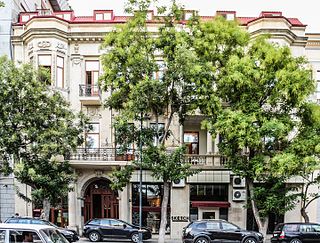
The Union of Azerbaijani Writers is the largest public organization of Azerbaijani writers, poets and publicists. It has over 1500 members at present. It was founded on June 13, 1934, when Azerbaijan was a part of the Soviet Union as the Azerbaijan Soviet Socialist Republic.
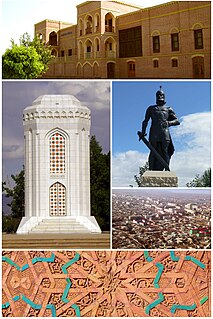
Economy of Nakhchivan covers the issues related to the economy of the city of Nakhchivan, is the most important center of economic activity in Azerbaijan.
Azerbaijani art is the art created by Azerbaijanis. They have created rich and distinctive art, a major part of which is applied art items. This form of art rooted in antiquity, is represented by a wide range of handicrafts, such as chasing (metalworking), jewellery-making, engraving, carving wood, stone and bone, carpet-making, lacing, pattern weaving and printing, and knitting and embroidery. Each of these decorative arts is evidence of the culture and the abilities of the Azerbaijan nation, and are very popular there. Many interesting facts pertaining to the development of arts and crafts in Azerbaijan were reported by merchants, travellers and diplomats who visited these places at different times.

The Ministry of Culture of Azerbaijan Republic is a governmental agency within the Cabinet of Azerbaijan in charge of regulation of the activities and promotion of Azerbaijani culture. The ministry is headed by Anar Karimov.
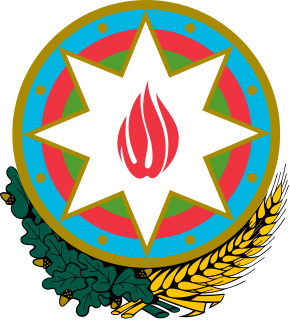
The Ministry of Economy of Azerbaijan Republic is the central executive body responsible for implementing state policy and regulation in the following areas: formulating economic policy of Azerbaijan, producing macroeconomic projections, creating a favorable environment for economic development and growth, encouraging investment activity, developing entrepreneurship and industry, regulating the licensing and permit system, protecting, developing and encouraging competition, protecting the rights of consumers, implementing state procurement policy, ensuring full and timely introduction of taxes and other mandatory payments relating to the authority of the Ministry, in the state budget, management of government assets, privatization, establishing state land management system, conducting state registration and single state cadastre of immovable property.
Abbas Alasgarov Abbas oglu was an Azerbaijani engineer and politician who served as the Chairman of the State Committee for City Building and Architecture of Azerbaijan from 2007. Construction engineer by profession, Asgarov is the chairman of the Union of Azerbaijani Architects and one of the authors of the main plan of Baku.

Historically, cotton production in Azerbaijan has been crucial to the national economy, accounting for approximately 25% of agricultural revenue. It occurs mainly in the area west of the Caspian Sea. Historical records supported by archaeological excavations have established cotton growing in Azerbaijan to the 5th and 6th centuries AD. During the Soviet era, it was termed as the nation's "white gold". Since the fall of the Soviet Union and independence, cotton has significantly declined in output, given that oil and grains are more profitable for Azeri farmers.
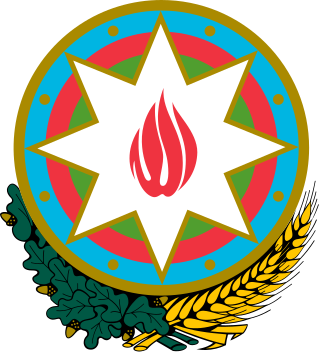
The State Migration Service of Azerbaijan Republic is a governmental agency within the Cabinet of Azerbaijan in charge of regulation of activities the sphere of migration taking in consideration issues of national security and stable social-economic and demographic development in Azerbaijan Republic. The committee is headed by Vusal Huseynov.

The National Archive Department of the Republic of Azerbaijan is a governmental agency within the Cabinet of Azerbaijan in charge of managing, maintaining, protecting and updating national archives of Azerbaijan. The agency is headed by Atakhan Pashayev.
Republican Seismic Survey Center (RSSC) is the main organization, involved in the research and study of earthquakes on the territory of Azerbaijan Republic. Seismological, geophysical, geochemical and geodynamic complex researches are conducted in the center.
The Judiciary of Azerbaijan exercises judicial power separately from the legislative power of parliament and executive power of the president.
The Azerbaijan is a country with very favorable natural conditions and rich natural resources. Snowy peaks, high mountains, foothill fertile soils, wide plains, Lowest Land Points Below Ocean Level are the main landscape forms of republic. This complex landscape structure has caused the variety in natural conditions - climate, soil-vegetation, and water resources. This, in turn, led to the uneven distribution of population and farms on the territory, and the specialization of production on different types.

Utilities in Azerbaijan cover the topic of public utility services in the territory of Azerbaijani Republic. The utilities of Azerbaijan are provided by the government owned public utilities: “Azersu” for the water supply and waste management, “Azerishiq” and “Azerenerji” for electricity, “Azerigaz” for natural gas, “Azeristiliktechizat” for district heating.

Mountainous Shirvan Economic Region is one of the 14 economic regions of Azerbaijan. It borders the economic regions of Shaki-Zagatala, Guba-Khachmaz, Absheron-Khizi, Shirvan-Salyan, and Central Aran. The region consists of the districts of Agsu, Ismayilli, Gobustan, and Shamakhi. It has an area of 6,130 square kilometres (2,370 sq mi). Its population was estimated to be at 324.8 thousand people in January 2021.
The fruit sector in Azerbaijan is a developing industry. The sector covered 171,600 ha. of land in 2016. Grape, apple, orange, pear and pomegranate are one of the major crops in fruit production in Azerbaijan.
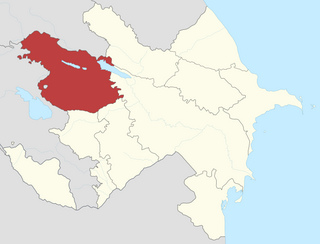
The Ganja-Gazakh Economic Region was one of the 10 economic regions of Azerbaijan. It consisted of Aghstafa, Dashkasan, Gadabay, Goranboy, Goygol, Gazakh, Samukh, Shamkir, Tovuz administrative districts, as well as the cities of Ganja and Naftalan. The most developed and important city of Ganja-Gazakh economic region was Ganja city. The total population was 1,265,200 as of January 1, 2017, representing about 13.6% of the country's population. In the economic region, 47 percent of the population lived in urban areas, and 53 percent lived in rural areas. Population density 103 people per km2 of land area.

Aran Economic Region was one of the 10 economic regions of Azerbaijan. It bordered Iran to the south, as well as the economic regions of Upper Karabakh, Ganja-Gazakh, Shaki-Zagatala, Mountainous Shirvan, Absheron, and Lankaran. The region consisted of the districts of Agdash, Aghjabadi, Barda, Beylagan, Bilasuvar, Jalilabad, Goychay, Hajigabul, Imishli, Kurdamir, Neftchala, Saatly, Sabirabad, Salyan, Ujar, Yevlakh, Zardab and the cities of Mingachevir, Shirvan and Yevlakh.
In the history of Azerbaijan, the Early Middle Ages lasted from the 3rd to the 11th century. This period in the territories of today's Azerbaijan Republic began with the incorporation of these territories into the Sasanian Persian Empire in the 3rd century AD. Feudalism took shape in Azerbaijan in the Early Middle Ages. The territories of Caucasian Albania became an arena of wars between the Byzantine Empire and the Sassanid Empire. After the Sassanid Empire was felled by the Arab Caliphate, Albania also weakened and was overthrown in 705 AD by the Abbasid Caliphate under the name of Arran. As the control of the Arab Caliphate over the Caucasus region weakened, independent states began to emerge in the territory of Azerbaijan.
References
- ↑ Samadov (www.anarsamadov.net), Anar. "Political division, population size and structure: Population by towns and regions of the Republic of Azerbaijan". The State Statistical Committee of the Republic of Azerbaijan. Retrieved 2019-05-31.
- ↑ "Political division, population size, and structure: Population at age 14-29 by towns and regions of the Republic of Azerbaijan at the beginning of 2018". The State Statistical Committee of the Republic of Azerbaijan. Retrieved 2019-05-31.
- ↑ "Law on Youth Policy of the Republic of Azerbaijan" (PDF).
- ↑ "Azerbaijan | Factsheets | Youthpolicy.org". www.youthpolicy.org. Retrieved 2019-05-31.
- ↑ "Volunteer movement in Azerbaijan". CBC.AZ. Retrieved 2019-05-31.